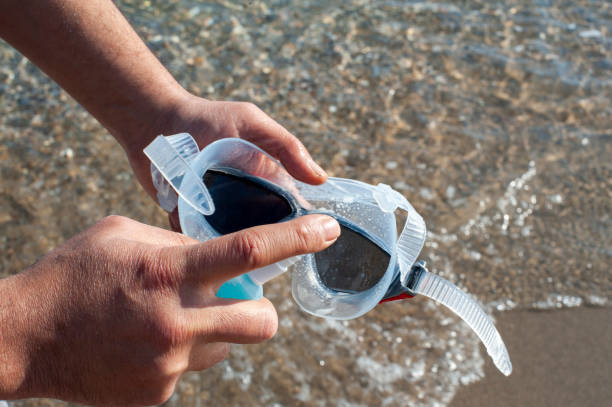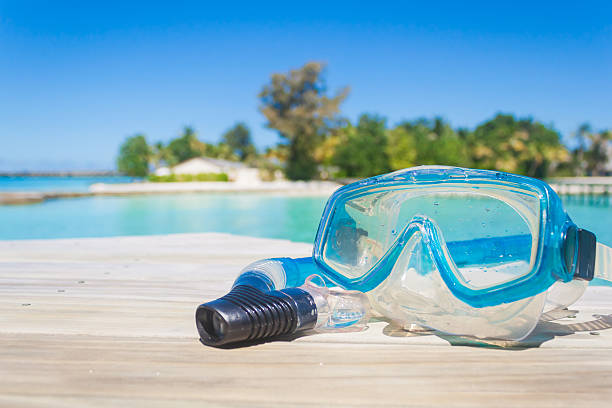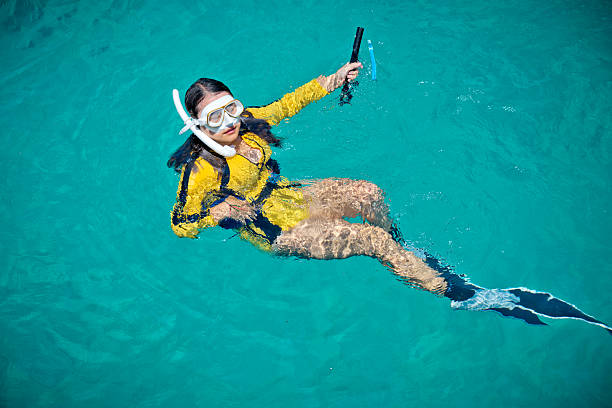Neoprenanzüge und Trockenanzüge sind unerlässlich Wassersportausrüstung Für Personen, die verschiedene Wassersportarten ausüben. Diese Spezialanzüge bieten Schutz, Isolierung und Komfort in verschiedenen Wasserumgebungen. In diesem Artikel gehen wir auf die Feinheiten von Neopren- und Trockenanzügen ein und untersuchen ihre Zusammensetzung, Funktionalität, Vor- und Nachteile sowie die wichtigsten Unterschiede zwischen Neopren- und Trockenanzügen. Ob Surfer, Taucher oder einfach nur Wassersportler – das Wissen über die Eignung dieser Anzüge wird Ihr Erlebnis im Wasser deutlich verbessern.
Trockenanzüge vs. Neoprenanzüge
| Flexibler und ermöglicht einen größeren Bewegungsspielraum | Trockenanzüge | Neoprenanzüge |
| Material | Wasserdichte, langlebige Materialien wie vulkanisierter Gummi, Neopren oder atmungsaktive Stoffe mit wasserdichten Nähten | Neopren, Gummi oder synthetische Materialien mit isolierenden Eigenschaften |
| Funktion | Halten Sie den Träger vollständig trocken, indem Sie das Eindringen von Wasser verhindern | Lassen Sie Wasser eindringen und bilden Sie eine dünne Schicht, die durch die Körperwärme erwärmt wird und für Isolierung sorgt |
| Anwendung | Ideal für kaltes Wasser oder extreme Bedingungen, wie z. B. professionelles Tauchen, Schnorcheln in kaltem Wasser und längere Einwirkung niedriger Temperaturen | Geeignet für mittlere bis warme Wassertemperaturen, häufig verwendet beim Surfen, Schwimmen und anderen Wassersportarten |
| Fit | Lockerer Schnitt mit Platz für zusätzliche Schichten, kann für eine bessere Passform individuell angepasst werden | Eng anliegende Passform, die sich dem Körper anpasst und Bewegungsfreiheit ermöglicht |
| Mobilität | Sperriger und weniger flexibel, was die Bewegung in gewissem Maße einschränkt | Lockerer Schnitt mit Platz für zusätzliche Schichten, kann für eine bessere Passform individuell angepasst werden |
| Kosten | Aufgrund ihrer Konstruktion und speziellen Funktionen im Allgemeinen teurer | Im Allgemeinen günstiger als Trockenanzüge |
Was sind Neoprenanzüge?

Was ist ein Neoprenanzug?
A Neoprenanzug ist ein speziell entwickeltes Kleidungsstück, das hauptsächlich aus Neopren, einer Art synthetischem Gummi, besteht. Es schmiegt sich eng an den Körper und bietet Isolierung und Schutz im Wasser. Im Gegensatz zu normaler Kleidung sind Tauchanzüge so konstruiert, dass sie eine dünne Wasserschicht zwischen Anzug und Haut einschließen. Dieses eingeschlossene Wasser erwärmt sich dann durch die Körperwärme und bildet eine Schutzbarriere gegen das kalte Wasser von außen.
Woraus bestehen Neoprenanzüge?
Neoprenanzüge bestehen überwiegend aus Neopren, einem flexiblen und langlebigen Material. Neopren entsteht durch die Polymerisation von Chloropren und ist eine gummiartige Substanz mit hervorragender Beständigkeit gegen Temperaturen, Chemikalien und Öle. Die Dicke des Neoprens in Tauchanzügen kann variieren, wobei unterschiedliche Stärken unterschiedlichen Wärmeschutz bieten. Zusätzlich können Neoprenanzüge auch andere Materialien wie Nylon enthalten, um die Haltbarkeit und Flexibilität des Anzugs zu verbessern.
Wofür werden Neoprenanzüge verwendet?
Der Hauptzweck eines Neoprenanzugs besteht darin, dem Träger in kaltem Wasser Wärme zu bieten. Durch die Speicherung und Erwärmung einer dünnen Wasserschicht am Körper tragen Neoprenanzüge dazu bei, bei längerem Wasseraufenthalt eine angenehme Körpertemperatur aufrechtzuerhalten. Neben der Isolierung bieten Neoprenanzüge auch Schutz vor Abschürfungen, Stichen und Quallenbegegnungen und sind somit ideal für verschiedene Wassersportarten und -aktivitäten.
Wie funktioniert ein Neoprenanzug?
Wie hält ein Neoprenanzug warm? Neoprenanzüge bieten Isolierung und Wärmeschutz durch verschiedene Faktoren. Die Dicke des Neoprens bestimmt seine Fähigkeit, die Körperwärme zu speichern. Dickeres Neopren bietet eine bessere Isolierung, aber es ist wichtig, ein Gleichgewicht zwischen Dicke und Flexibilität zu finden, um Bewegungseinschränkungen zu vermeiden.
Zusätzlich wirkt eine Wasserschicht zwischen Anzug und Haut isolierend. Sie absorbiert und speichert die Körperwärme und reduziert gleichzeitig die Wärmeabgabe an das umgebende Wasser. Neoprenanzüge sorgen zudem für Auftrieb und erleichtern Schwimmern und Tauchern das Überwasserhalten. Die Flexibilität des Neoprenmaterials ermöglicht große Bewegungsfreiheit, die für optimale Leistung und die Vermeidung von Ermüdung bei Wasseraktivitäten unerlässlich ist.
Vor- und Nachteile von Neoprenanzügen
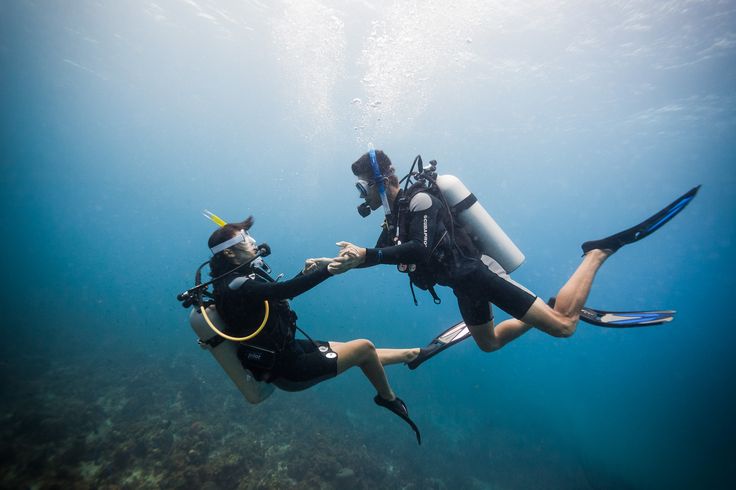
Neoprenanzüge bieten zahlreiche Vorteile, bringen aber auch einige Nachteile mit sich. Wenn Sie die Vor- und Nachteile von Neoprenanzügen kennen, können Sie eine fundierte Entscheidung für Ihre Wasseraktivitäten treffen.
Vorteile
- Bietet Isolierung und Wärmeschutz in Umgebungen mit kaltem Wasser.
- Bietet Schutz vor Abrieb und Stichen.
- Verbessert den Auftrieb und unterstützt das Schweben sowie die Schwimmtechnik.
- Ermöglicht dank der Flexibilität des Neoprens einen großen Bewegungsspielraum.
- Weit verbreitet und im Vergleich zu Trockenanzügen relativ erschwinglich.
Nachteile
- Bei extremer Kälte weniger wirksam als Trockenanzüge.
- Kann einschränkend und unbequem sein, wenn die Passform nicht richtig ist.
- Es kann einige Zeit dauern, bis Sie sich an das Gefühl von Nässe auf der Haut gewöhnt haben.
- Erfordert die richtige Pflege und Wartung, um die Lebensdauer zu verlängern.
- Bietet bei längerer Wassereinwirkung möglicherweise keine ausreichende Isolierung.
Was sind Trockenanzüge?

Was ist ein Trockenanzug?
Ein Trockenanzug ist ein Ganzkörperanzug, der den Körper des Trägers bei Wasseraktivitäten trocken hält. Im Gegensatz zu Neoprenanzügen, die eine dünne Wasserschicht am Körper halten, um zu isolieren, sind Trockenanzüge vollständig versiegelt und wasserundurchlässig. Sie bestehen aus atmungsaktiven Gewebeschichten wie Gore-Tex und fortschrittlichen Dichtungstechniken an Hals, Handgelenken und Knöcheln, um sicherzustellen, dass kein Wasser in den Anzug eindringt. Durch dieses Design isolieren Trockenanzüge, indem sie eine isolierende Luftschicht anstelle von Wasser am Körper halten. Dadurch bieten Trockenanzüge hervorragenden Schutz und Komfort bei kälteren Wassertemperaturen und eignen sich ideal für Aktivitäten wie Tauchen, Kajakfahren und Segeln.
Woraus bestehen Trockenanzüge?
Trockenanzüge bestehen typischerweise aus laminierten Geweben wie Gore-Tex, die hervorragende Wasserbeständigkeit und Atmungsaktivität bieten. Diese Gewebe bestehen aus mehreren Schichten, darunter einer wasserdichten Membran, einer Isolierschicht und einer schützenden Außenschicht. Die wasserdichte Membran wirkt als Barriere gegen Wasser und verhindert, dass Feuchtigkeit in den Anzug eindringt. Die Isolierschicht wärmt und macht den Anzug somit auch für kalte Gewässer geeignet. Die schützende Außenschicht erhöht die Haltbarkeit und schützt vor Abrieb und Rissen. Diese Konstruktion sorgt dafür, dass der Anzug wasserdicht bleibt und gleichzeitig Feuchtigkeit und Schweiß effizient vom Körper abgeleitet werden, sodass der Träger trocken und komfortabel bleibt.
Wofür werden Trockenanzüge verwendet?
Der Hauptzweck eines Trockenanzugs besteht darin, den Träger trocken zu halten, indem er eine dichte Barriere gegen eindringendes Wasser bildet. Indem sie den Kontakt des Körpers mit Wasser verhindern, bieten Trockenanzüge hervorragende Isolierung und Schutz bei extrem kaltem Wasser. Darüber hinaus bieten Trockenanzüge den Vorteil der Vielseitigkeit, da sie mit isolierenden Schichten darunter getragen werden können, um sich an unterschiedliche Wassertemperaturen anzupassen.
Wie funktioniert ein Trockenanzug?
Trockenanzüge funktionieren durch eine Kombination aus Versiegelungsmethoden und fortschrittlichen Gewebetechnologien, um Wasser fernzuhalten. Die Nähte eines Trockenanzugs sind vollständig verklebt und versiegelt, sodass kein Wasser eindringen kann. Zusätzlich sind die Hals- und Handgelenksmanschetten wasserdicht konstruiert, um das Eindringen von Wasser in diese gefährdeten Bereiche zu verhindern.
Die Hauptfunktion des in Trockenanzügen verwendeten Gewebes besteht darin, eine atmungsaktive Barriere zu bilden, die Feuchtigkeit und Schweiß entweichen lässt und gleichzeitig das Eindringen von Wasser in den Anzug verhindert. Die atmungsaktiven Eigenschaften des Gewebes tragen zur Regulierung der Körpertemperatur bei und verringern das Risiko einer Überhitzung bei intensiven Wasseraktivitäten.
Vor- und Nachteile von Trockenanzügen

Wie Neoprenanzüge haben auch Trockenanzüge ihre eigenen Vor- und Nachteile. Wenn Sie diese kennen, können Sie besser entscheiden, ob ein Trockenanzug für Ihre speziellen Wasseraktivitäten die richtige Wahl ist.
Vorteile
- Hält den Träger vollkommen trocken und bietet optimale Isolierung und Schutz bei kaltem Wasser.
- Sehr vielseitig, da sie je nach Wassertemperatur mit unterschiedlichen Schichten getragen werden können.
- Ermöglicht längeres Einwirken von Wasser, ohne dass man das unangenehme Gefühl der Nässe verspürt.
- Bietet überragende Haltbarkeit, insbesondere für Personen, die anspruchsvolle Wasseraktivitäten ausüben.
- Kann im Vergleich zu Neoprenanzügen leicht repariert werden.
Nachteile
- Im Allgemeinen teurer als Neoprenanzüge.
- Kann sperriger sein und die Bewegung bis zu einem gewissen Grad einschränken.
- Erfordert eine entsprechende Ausbildung und Übung, um mit Notsituationen umzugehen, wie etwa der Kontrolle des Auftriebs oder dem Entkommen aus einer Verwicklung.
- Kann bei wärmeren Wassertemperaturen zu Überhitzung führen, wenn nicht die richtige Kleidungsschichtung verwendet wird.
- Geringerer Auftrieb im Vergleich zu Neoprenanzügen, daher sind für einige Wasseraktivitäten zusätzliche Schwimmhilfen erforderlich.
Unterschied zwischen einem Trockenanzug und einem Neoprenanzug
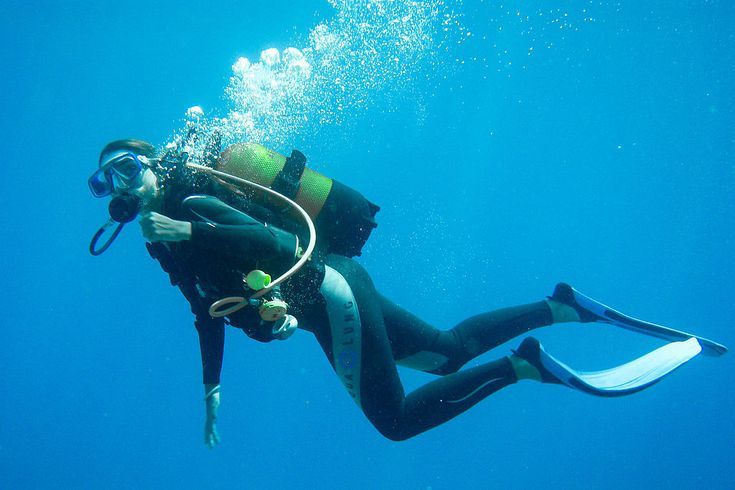
Trocken- und Neoprenanzüge dienen beide der Isolierung und dem Schutz im Wasser. Sie unterscheiden sich jedoch erheblich in Design, Konstruktion, Abdichtung und Anwendung. Das Verständnis dieser wesentlichen Unterschiede hilft Ihnen, eine fundierte Entscheidung zu treffen.
Design und Konstruktion
Die Konstruktionstechniken von Neoprenanzügen und Trockenanzügen unterscheiden sich erheblich.
Neoprenanzüge bestehen typischerweise aus Blindstichnähte, geklebte und manchmal getapte Nähte. Die Neoprenteile des Anzugs werden zuerst zusammengeklebt und dann genäht, wobei die Nadel nur die Oberflächenschicht des Neoprens durchdringt, wodurch das Eindringen von Wasser durch die Nähte minimiert wird.
Im Gegensatz dazu Trockenanzüge Verwenden Sie vollständig verklebte und versiegelte Nähte, um eine wasserdichte Barriere zu schaffenDiese Nähte werden häufig mit zusätzlichen Stoffschichten und Dichtungsmaterialien verstärkt, um sicherzustellen, dass im gesamten Anzug kein Wasser eindringt.
Auch die Einstiegssysteme von Neoprenanzügen und Trockenanzügen unterscheiden sich.
Neoprenanzüge verfügen üblicherweise über einen Reißverschluss auf der Rückseite, manche haben aber auch Brustreißverschlüsse oder einen Fronteinstieg. Trockenanzüge hingegen haben meist einen Reißverschluss vorne oder hinten, eine überlappende Klappe und zusätzliche Dichtungsmechanismen für maximalen Wasserschutz.
Abdichtung und Wasserschutz
Einer der grundlegenden Unterschiede zwischen Neoprenanzügen und Trockenanzügen liegt in der Versiegelung und dem Wasserschutz. Neoprenanzüge basieren auf einer Kombination aus Neoprendicke und der eingeschlossenen Wasserschicht zur Isolierung und zum Schutz vor kaltem Wasser.
Trockenanzüge hingegen dichten vollständig gegen eindringendes Wasser ab. Dies wird durch Hals- und Handgelenkmanschetten erreicht, die typischerweise aus Latex oder Neopren bestehen. Diese Dichtungen sind so konzipiert, dass sie ihre Elastizität und Wasserdichtigkeit behalten und so das Eindringen von Wasser in den Anzug verhindern. Zusätzlich verfügen Trockenanzüge über fortschrittliche Dichtungsmechanismen in Form von integrierten Socken oder Stiefeln, um sicherzustellen, dass kein Wasser durch den Fußbereich eindringt.
Thermische Eigenschaften
Die thermischen Eigenschaften von Neoprenanzügen und Trockenanzügen variieren je nach Design und Einsatzzweck. Neoprenanzüge basieren hauptsächlich auf der Isolierung durch Neopren und der eingeschlossenen Wasserschicht. Die Dicke des Neoprens beeinflusst die Wärme des Anzugs, wobei dickeres Neopren eine bessere Isolierung bietet. Neoprenanzüge sind üblicherweise in verschiedenen Dicken erhältlich, die für unterschiedliche Wassertemperaturen geeignet sind.
Trockenanzüge hingegen eignen sich hervorragend für extrem kaltes Wasser. Durch die vollständige Wasserbarriere bleiben sie trocken und halten die Körpertemperatur effektiver. Trockenanzüge werden typischerweise in Situationen eingesetzt, in denen mit längerem Aufenthalt in kaltem Wasser zu rechnen ist, wie zum Beispiel beim Eistauchen oder bei Erkundungen in Polarregionen.
Unterschiede in den Anwendungen
Beim Surfen und anderen Wassersportarten hängt die Wahl zwischen Neopren- und Trockenanzügen von verschiedenen Faktoren ab. Neoprenanzüge werden im Allgemeinen zum Surfen bevorzugt, da sie flexibel, bewegungsfreundlich, isolierend und vor Abschürfungen schützen. Surfer tragen bei wärmeren Wassertemperaturen oft Neoprenanzüge mit dünnerem und bei kälteren Temperaturen dickeres Neopren.
Trockenanzüge sind aufgrund ihrer Sperrigkeit und Bewegungseinschränkung zwar nicht ideal für typische Surfaktivitäten, finden aber Anwendung in bestimmten Wassersportarten. Stand-Up-Paddler, Kajakfahrer oder Personen, die längeres Eintauchen ins Wasser erwarten, entscheiden sich möglicherweise für Trockenanzüge, da sie besseren Wasserschutz und Komfort bieten.
Tauchen und Unterwassererkundung
Beim Tauchen und Schnorcheln werden Trockenanzüge oft bevorzugt, da sie den Träger in kaltem Wasser trocken und warm halten. Trockenanzüge bieten hervorragende Isolierung, insbesondere bei längeren Tauchgängen oder in extrem kaltem Wasser. Sie bieten außerdem eine verbesserte Tarierungskontrolle und die Möglichkeit, isolierende Schichten zu tragen, sodass Taucher ihren Wärmeschutz an die Wassertemperatur anpassen können.
Neoprenanzüge werden jedoch immer noch häufig beim Tauchen verwendet, insbesondere in wärmeren Gewässern. Sie bieten eine ausreichende Wärmeisolierung für kürzere Tauchgänge und werden aufgrund ihrer Flexibilität und Bewegungsfreiheit unter Wasser bevorzugt.
Aktivitäten bei kaltem Wetter
Bei eisigen Temperaturen sind Trockenanzüge für alle, die in der Kälte aktiv sind, unverzichtbar. Die Undurchlässigkeit der Trockenanzüge verhindert jeglichen Wasserkontakt, hält den Träger trocken und reduziert das Risiko einer Unterkühlung deutlich. Diese Anzüge sind besonders beliebt bei Eistauchern, professionellen Winterwassersportlern und Personen, die sich in extrem kalte Gewässer wagen.
Neoprenanzüge bieten zwar Isolierung und Schutz, wärmen aber bei eisigen Temperaturen möglicherweise nicht ausreichend, da das eingeschlossene Wasser schnell Wärme verliert. Neoprenanzüge werden häufiger in mäßig kalten Gewässern oder als Unterwäsche unter Trockenanzügen verwendet, um die Isolierung zu verbessern.
Wann sollte man einen Trockenanzug tragen?

In bestimmten Situationen, in denen Isolierung und vollständiger Wasserschutz von größter Bedeutung sind, ist die Wahl eines Trockenanzugs gegenüber einem Neoprenanzug gerechtfertigt. Hier sind einige Beispiele, in denen ein Trockenanzug die bessere Wahl ist:
- Längerer Kontakt mit kaltem Wasser: Wenn Sie damit rechnen, längere Zeit in kaltem Wasser zu verbringen, beispielsweise beim Eistauchen oder Bootfahren im Winter, ist ein Trockenanzug aufgrund seiner hervorragenden Isolier- und Wasserschutzeigenschaften die ideale Wahl.
- Extreme Wetterbedingungen: Bei Wasseraktivitäten bei extrem kaltem Wetter, wie etwa Polarexpeditionen oder Schneemobilfahrten auf zugefrorenen Seen, ist ein Trockenanzug für die Gewährleistung von Sicherheit und Komfort unerlässlich.
- Bedarf an vielseitiger Schichtung: Trockenanzüge ermöglichen das Anbringen isolierender Schichten darunter, sodass Sie sich problemlos an unterschiedliche Wassertemperaturen anpassen können. Diese Flexibilität ist besonders vorteilhaft, wenn Sie Aktivitäten in kalten und wärmeren Gewässern planen.
Wann sollte man einen Neoprenanzug tragen?

Neoprenanzüge bieten große Vielseitigkeit und werden häufig bei verschiedenen Wassersportarten eingesetzt. Hier sind einige Szenarien, in denen das Tragen eines Neoprenanzugs empfohlen wird:
- Moderate Wassertemperaturen: Neoprenanzüge eignen sich für Wassertemperaturen von mild bis mäßig kalt. Sie bieten effektive Wärmeisolierung und Schutz bei Aktivitäten wie Schwimmen, Surfen, Kajakfahren und Paddeln.
- SchBestelldauer Wasseraktivitäten: Neoprenanzüge eignen sich ideal für kürzere Aktivitäten, da die eingeschlossene Wasserschicht für ausreichende Isolierung sorgt. Schnorcheln, kurze Tauchgänge oder Freizeitschwimmen in kühleren Gewässern sind mit einem Neoprenanzug bequem möglich.
- Bewegungsfreiheit: Neoprenanzüge sind für ihre Flexibilität und ihren Komfort bekannt und ermöglichen ein breites Bewegungsspektrum. Das macht sie zu einer beliebten Wahl für verschiedene Wassersportarten, bei denen Beweglichkeit und Technik entscheidend sind.
Abschluss
Zusammenfassend lässt sich sagen, dass Neoprenanzüge und Trockenanzüge für alle, die Wassersport betreiben, unverzichtbar sind. Neoprenanzüge bieten Isolierung, Schutz und Flexibilität und eignen sich daher für eine Vielzahl von Wassersportarten bei unterschiedlichen Temperaturen. Trockenanzüge hingegen bieten vollständigen Wasserschutz und optimale Isolierung und sind daher unverzichtbar für Expeditionen und Aktivitäten in kaltem Wasser.
Wenn Sie die Konstruktion, den Zweck und die wichtigsten Unterschiede dieser Anzüge verstehen, können Sie fundierte Entscheidungen basierend auf Ihren spezifischen Bedürfnissen und den Bedingungen treffen, denen Sie ausgesetzt sind. Ob Surfer, Taucher oder Entdecker eisiger Gewässer – die Wahl des richtigen Anzugs verbessert Ihren Komfort, Ihre Sicherheit und Ihre Leistung im Wasser.
FAQs zu Neoprenanzügen und Trockenanzügen
F1: Was ist der Unterschied zwischen einem Neoprenanzug und einem Trockenanzug?
Neoprenanzug und Trockenanzug dienen je nach Wassertemperatur und Aktivität unterschiedlichen Zwecken. Ein Neoprenanzug besteht aus Neopren und hält eine dünne Wasserschicht zwischen Anzug und Haut, die durch die Körperwärme erwärmt wird. Dadurch eignet er sich für mittelkaltes bis kaltes Wasser. Ein Trockenanzug hingegen hält den Träger durch enge Bündchen und einen wasserdichten Reißverschluss vollständig trocken und ermöglicht so das Tragen isolierender Schichten darunter. Trockenanzüge sind ideal für extrem kaltes Wasser oder längere Aufenthalte, da sie im Vergleich zu Neoprenanzügen einen besseren Wärmeschutz bieten.
F2: Wie sollte ein Neoprenanzug sitzen?
Ein Neoprenanzug sollte eng am Körper anliegen, ohne zu eng oder einzuengen. Er sollte volle Bewegungsfreiheit ermöglichen und gleichzeitig das Eindringen von Wasser minimieren. Besonders zu prüfende Bereiche sind Hals, Handgelenke und Knöchel, die gut abdichten müssen, um ein Eindringen von Wasser zu verhindern. Es sollten keine größeren Lücken oder losen Stellen vorhanden sein, insbesondere im unteren Rücken-, Schulter- und Kniebereich. Ein richtig sitzender Neoprenanzug kann an Land etwas eng sein, sollte aber im Wasser bequem sein und eine effektive Wärmeisolierung sowie Auftrieb gewährleisten.
F3: Kann ich einen Neoprenanzug in kaltem Wasser verwenden?
Ja, Sie können einen Neoprenanzug in kaltem Wasser tragen, aber die Dicke und Art des Neoprenanzugs sind entscheidend. Für kaltes Wasser, typischerweise definiert als Wassertemperaturen unter 15 °C, wird ein Neoprenanzug mit einer Dicke von mindestens 5 mm empfohlen. Viele Kaltwasser-Neoprenanzüge haben dickeres Material im Rumpfbereich für mehr Wärme und etwas dünneres Material an den Gliedmaßen für mehr Flexibilität. Eigenschaften wie versiegelte Nähte, Thermofutter und eine eng anliegende Passform helfen, die Körperwärme zu speichern. Bei extrem kaltem Wasser oder längerem Aufenthalt im Wasser kann jedoch ein Trockenanzug besser geeignet sein, um eine bessere Isolierung und mehr Komfort zu gewährleisten.
F4: Wie pflege und pflege ich meinen Neoprenanzug?
Die Pflege Ihres Neoprenanzugs umfasst mehrere Schritte, um seine Langlebigkeit zu gewährleisten. Spülen Sie ihn nach jedem Gebrauch gründlich mit Süßwasser aus, um Salz, Sand und Chlor zu entfernen. Vermeiden Sie die Verwendung von heißem Wasser oder scharfen Reinigungsmitteln. Trocknen Sie Ihren Neoprenanzug im Schatten, auf links gedreht und vermeiden Sie direkte Sonneneinstrahlung oder Wärmequellen, da diese das Neopren beschädigen können. Lagern Sie ihn flach liegend oder hängend auf einem breiten Kleiderbügel, um Falten zu vermeiden und seine Form zu erhalten. Überprüfen Sie ihn regelmäßig auf Risse oder Beschädigungen und reparieren Sie diese umgehend, um weiteren Verschleiß zu vermeiden und seine isolierenden Eigenschaften zu erhalten.
F5: Auf welche Hauptmerkmale sollte man bei einem Trockenanzug achten?
Zu den wichtigsten Merkmalen eines Trockenanzugs gehören hochwertige, wasserdichte Materialien wie Trilaminat oder Neopren sowie robuste Dichtungen an Hals, Handgelenken und Knöcheln, die das Eindringen von Wasser verhindern. Ein robuster, wasserdichter Reißverschluss ist für einen wasserdichten Verschluss unerlässlich. Achten Sie auf einen Anzug mit verstärkten Bereichen an stark beanspruchten Stellen wie Knien und Ellbogen. Einige Trockenanzüge bieten integrierte Stiefel oder Socken und eine integrierte Kapuze für zusätzlichen Schutz. Achten Sie darauf, wie einfach sich der Anzug an- und ausziehen lässt, und prüfen Sie, ob er verstellbar ist, um einen bequemen und sicheren Sitz auch bei längerem Tragen zu gewährleisten.
F6: Kann ich einen Trockenanzug zum Tauchen und für andere Wassersportarten verwenden?
Ja, ein Trockenanzug eignet sich sowohl zum Tauchen als auch für andere Wassersportarten wie Kajakfahren, Paddeln und Segeln. Sein Hauptvorteil ist der Wärmeschutz in extrem kaltem Wasser, da er Sie trocken hält. Beim Tauchen können Sie unter einem Trockenanzug isolierende Schichten tragen, die im Vergleich zu Nassanzügen für mehr Wärme sorgen. Achten Sie darauf, dass der Trockenanzug für die jeweilige Aktivität geeignet ist und verstärkte Bereiche für mehr Strapazierfähigkeit und Flexibilität für mehr Bewegungsfreiheit aufweist. Eine fundierte Ausbildung im Umgang mit einem Trockenanzug wird empfohlen, insbesondere beim Tauchen, um die Tarierung und Notfallmaßnahmen effektiv zu beherrschen.
